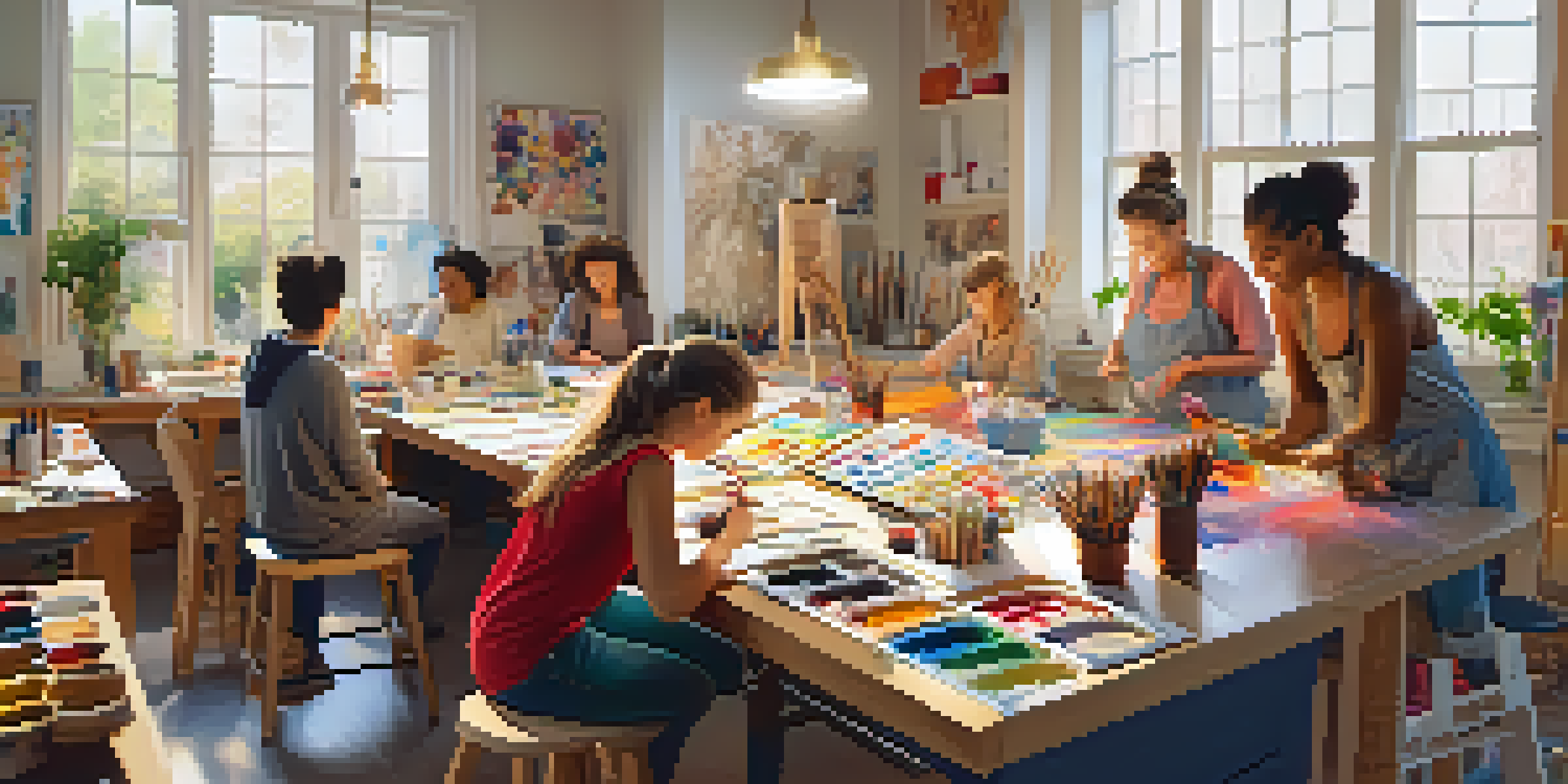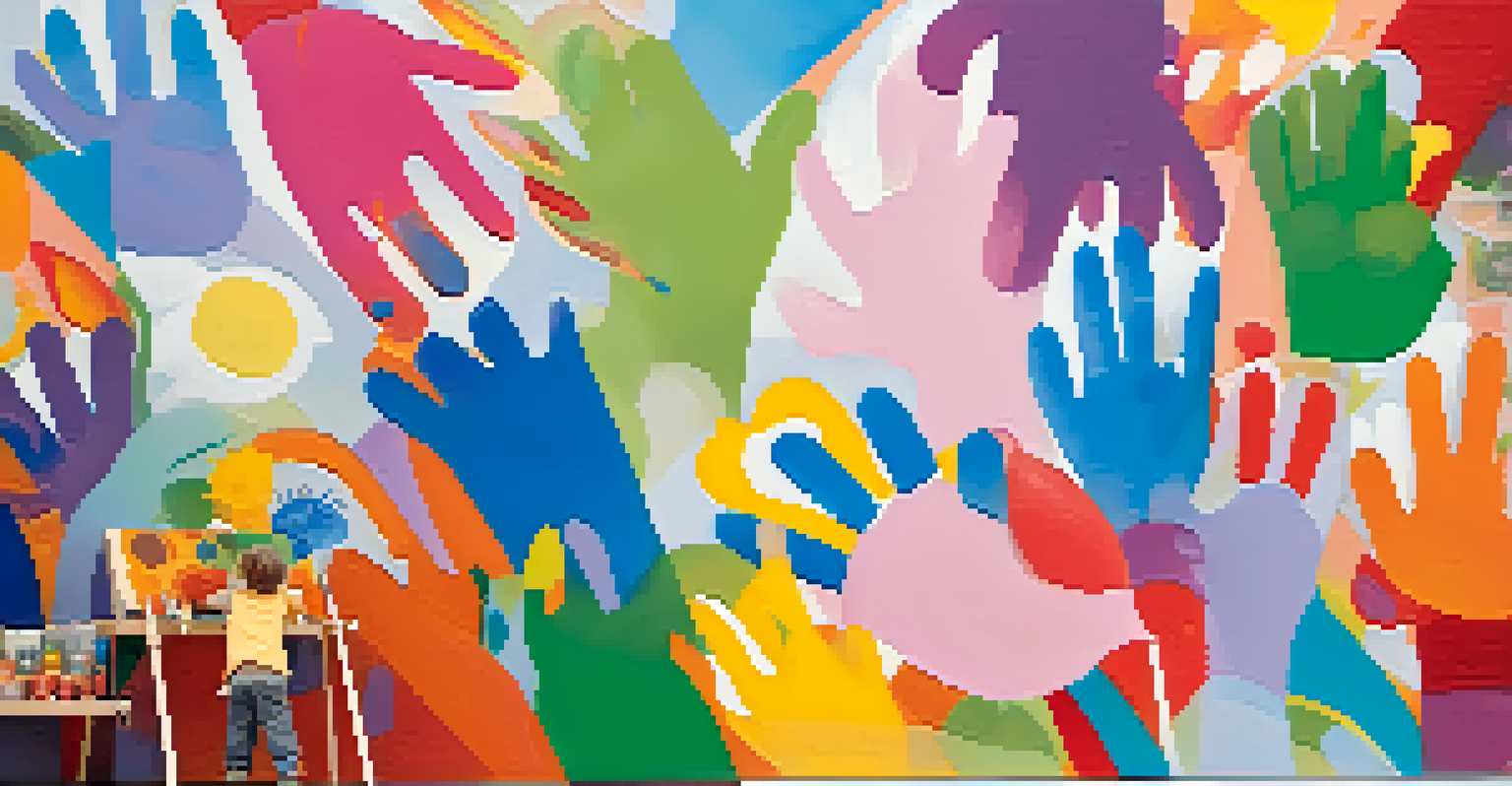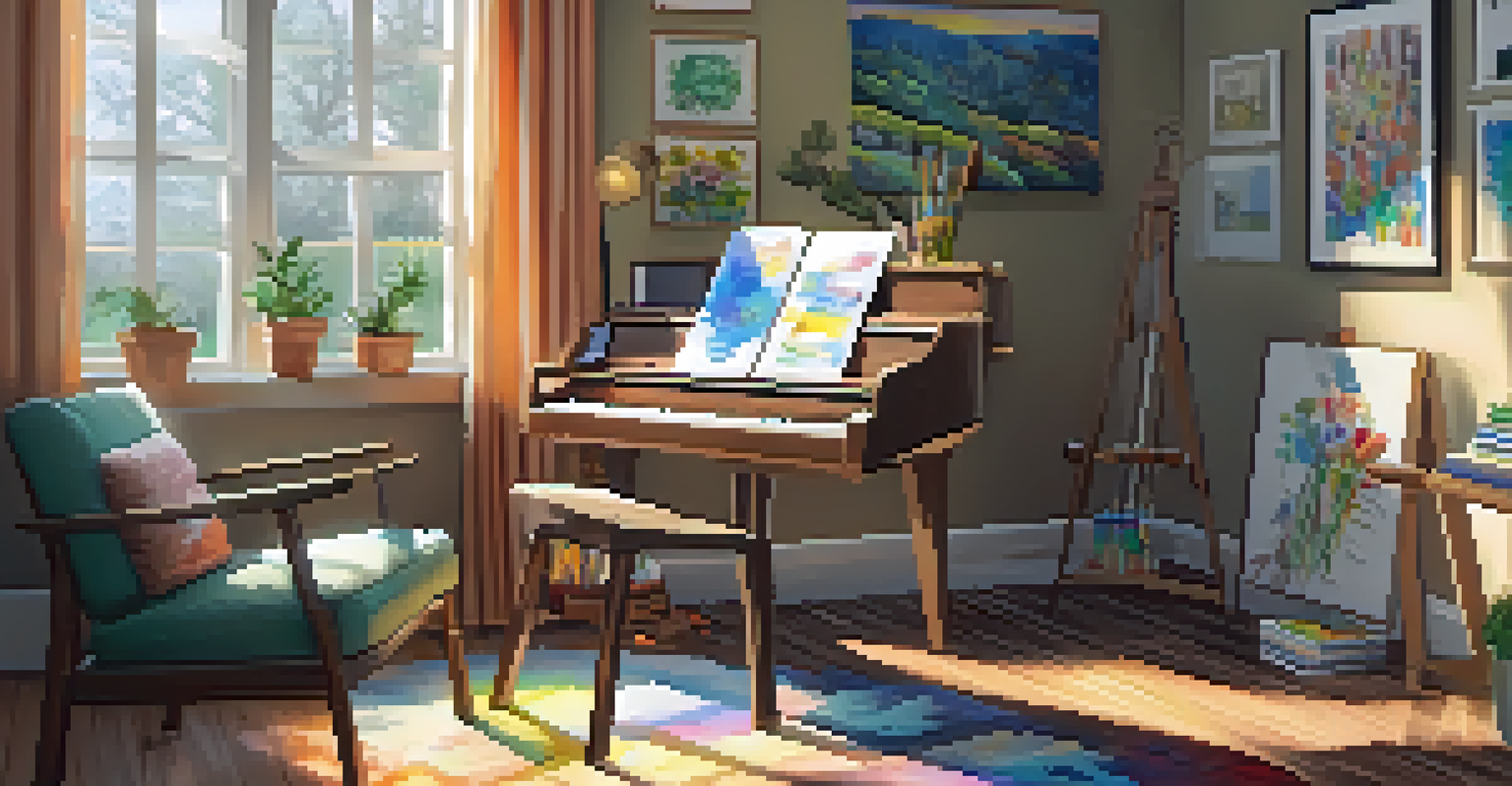Playfulness in Art Therapy: Healing Through Creative Expression

Understanding Art Therapy and Its Benefits
Art therapy combines artistic expression with psychological healing, providing a unique outlet for emotions. It allows individuals to express feelings that might be hard to articulate with words, fostering deeper self-awareness. Through various artistic mediums, clients can explore their thoughts, reduce anxiety, and improve their overall well-being.
Art is the most beautiful of all lies.
The therapeutic process encourages a sense of freedom and exploration, which is vital for personal growth. By engaging in creative activities, participants can tap into their subconscious, revealing insights about their struggles and aspirations. This process not only promotes healing but also enhances self-esteem and personal empowerment.
Art therapy is versatile, making it accessible for people of all ages and backgrounds. Whether through painting, drawing, or sculpting, individuals can find a medium that resonates with them. This personalized approach ensures that therapy feels engaging and relevant, ultimately leading to more effective healing.
The Role of Playfulness in Art Therapy
Playfulness is a cornerstone of art therapy, inviting individuals to engage with their creativity without fear of judgment. When clients approach art with a playful mindset, they’re more likely to experiment and explore, leading to breakthroughs in self-expression. This lightheartedness can help reduce stress and anxiety, creating a safe space for healing.

Incorporating play into therapy sessions encourages spontaneity and curiosity. Clients can let go of rigid expectations and simply enjoy the process of creating. This shift in perspective can be transformative, allowing individuals to reconnect with their inner child and rediscover joy in the act of making art.
Art Therapy Enhances Emotional Healing
Art therapy combines creative expression with psychological healing, allowing individuals to explore emotions and improve well-being.
Moreover, playfulness fosters connection and collaboration, especially in group settings. Participants often share laughs and stories while creating together, building a supportive community that enhances the therapeutic experience. This sense of belonging can be incredibly healing, reminding individuals that they are not alone in their struggles.
Techniques to Foster Playfulness in Art Therapy
There are numerous techniques art therapists use to cultivate playfulness during sessions. One popular method is 'free art,' where clients create without any predetermined goals or guidelines. This approach allows for authentic expression and encourages participants to follow their instincts and curiosities.
The creative adult is the child who survived.
Another technique involves the use of unconventional materials, such as recycled objects or natural elements. By incorporating these unexpected items into their artwork, clients can think outside the box and engage their imaginations. This not only makes the creative process more enjoyable but also helps break down barriers to self-expression.
Group activities, such as collaborative mural painting, can also spark playfulness. Working together on a shared project encourages spontaneity and fosters a sense of camaraderie. These interactions can lead to moments of laughter and creativity that enhance the therapeutic experience for everyone involved.
The Psychological Impact of Creative Play
Engaging in playful art-making can significantly impact mental health. Research shows that creative expression can reduce symptoms of depression and anxiety, providing a healthy outlet for emotions. This therapeutic play can stimulate the release of endorphins, promoting a sense of happiness and well-being.
Furthermore, playfulness in art therapy encourages resilience. When clients approach challenges with a playful mindset, they learn to view obstacles as opportunities for growth rather than sources of frustration. This shift in perspective empowers individuals to tackle their problems with creativity and innovation.
Playfulness Boosts Creativity and Joy
Incorporating playfulness into art therapy encourages spontaneity, reduces anxiety, and fosters a supportive community among participants.
The act of creating art also promotes mindfulness, as clients become fully immersed in the process. This focus can help them disconnect from negative thoughts and cultivate a sense of presence. By grounding themselves in the moment, individuals can experience a profound sense of peace and clarity.
Success Stories: Healing Through Playfulness
Many individuals have experienced life-changing transformations through playful art therapy. For example, a young adult struggling with anxiety found solace in creating whimsical drawings. This playful approach allowed them to express their fears in a non-threatening way, ultimately leading to greater self-acceptance and emotional resilience.
Another case involved a group of children who had faced trauma. Through collaborative art projects that emphasized play, they were able to bond and share their experiences in a safe environment. The laughter and creativity fostered a sense of community and healing that greatly improved their emotional well-being.
These success stories highlight the power of playfulness in art therapy. By embracing creativity without reservation, clients can embark on a journey of self-discovery and healing. The playful spirit inherent in art-making serves as a reminder that joy and healing can coexist.
Integrating Art Therapy into Everyday Life
While art therapy is often conducted in professional settings, its principles can easily be integrated into daily life. Individuals can create a designated space at home for creative expression, filled with supplies that inspire them. This space can serve as a sanctuary for relaxation and exploration, promoting mental well-being.
Engaging in regular artistic activities, whether it's doodling, painting, or crafting, can help maintain a playful mindset. Setting aside time each week for creative expression allows individuals to reconnect with their inner child and enjoy the therapeutic benefits of play. Even simple activities, like coloring in a book, can provide stress relief.
Creative Activities Benefit Mental Health
Engaging in artistic activities not only promotes mindfulness and resilience but also provides a healthy outlet for emotions.
Additionally, sharing art with friends and family can enhance the sense of community and connection. Hosting casual art nights or workshops encourages collective creativity, reminding everyone involved of the joy that comes from playful expression. These shared experiences can create lasting bonds and promote collective healing.
Conclusion: Embracing Playfulness for Healing
In conclusion, playfulness is an essential element of art therapy that greatly enhances the healing process. By fostering an environment that encourages creativity and spontaneity, individuals can explore their emotions in a safe and engaging way. This playful approach not only promotes personal growth but also builds resilience and community.
As more people recognize the importance of creative expression in mental health, the integration of playfulness in therapeutic practices will continue to grow. Whether through professional therapy or personal exploration, embracing play can lead to profound healing experiences. It invites individuals to reconnect with themselves and find joy in the act of creation.

Ultimately, art therapy reminds us that healing doesn't have to be a serious endeavor. By welcoming playfulness into our lives, we can unlock new pathways to self-discovery and emotional well-being, making the journey of healing a joyful one.